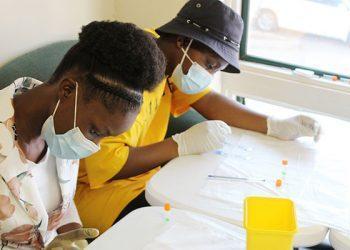- November 30, 2022
- Posted by: acuadmin
- Category: News

By 2007, the HIV response had significantly contributed to better health information systems, enabling some of the best global and country-level monitoring of any major health condition. WHO and UNAIDS produced detailed annual reports on changing HIV epidemics, their social determinants, and the responses in individual countries and globally.
Evidence was emerging about what worked best to reduce HIV risks, to shrink the gaps in service coverage, to step up access to life-prolonging therapy, and to reduce the number of new infections and deaths. Evidence further revealed the vibrant role that community networks and civil society initiatives played in getting services closer to people, providing home-based care, and calling loudly for better coverage with more affordable drugs.
Better data revealed additional statistics with significant programmatic implications. Preventive interventions were not reaching girls and young women. Newer data showed that, in sub-Saharan Africa, girls and young women accounted for more than 70% of all young people infected with HIV. In terms of awareness of their HIV status, more women were being tested, but men were being missed.
At the 17th International AIDS Conference held in Mexico City in 2008, WHO launched a package of priority interventions designed to help low- and middle-income countries move towards universal access to HIV prevention, treatment, care, and support. The package captured what the global AIDS response needed to deliver to reach this goal.
“Preventive interventions were not reaching girls and young women.” Dr Chan, WHO Director-General
Using mathematical modelling, WHO scientists estimated that universal and annual voluntary testing, followed by immediate antiretroviral therapy – regardless of the clinical stage or CD4 count – could reduce new HIV infections by 95% within ten years. But that was an aspirational calculation in the realm of “ifs”. Such a dramatic shift in the approach to control would need better and cheaper drugs plus the persuasive power of a breakthrough. That, too, would come.
While some asked whether the world could treat its way out of the epidemic, others argued that renewed and intensified efforts in HIV prevention would be needed to push the epidemic into an irreversible decline. As history would prove, an epidemic as widespread, entrenched, and difficult as HIV needed both.
Our Courses
-
Advanced Certificate In HIV Counselling And Testing
With hundreds of medications in the market, Pharm Ltd. needed a proper method to predict and manage their inventory. Using a mean absolute percentage analysis (MAPE), the teams defined appropriate levels for raw materials and finished products by mapping.
November 28, 2022 Read more -
HIV Rapid Testing- (Serial Testing)
With hundreds of medications in the market, Pharm Ltd. needed a proper method to predict and manage their inventory. Using a mean absolute percentage analysis (MAPE), the teams defined appropriate levels for raw materials and finished products by mapping.
November 28, 2022 Read more



